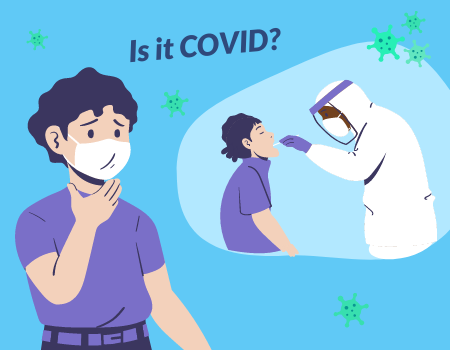Clarifying pay issues around COVID infections & vaccinations
Most of OSHA’s covid vaccinate-or-test-and-mask mandate is officially dead. Nevertheless, OSHA is still encouraging employers to institute their own shot mandates. And many have obliged. But issues regarding the circumstances under which you must pay employees and whether you must extend FMLA leave continue to linger.
Let’s see if we can clear up some of the confusion.
When you absolutely, positively have to pay nonexempts
Shots or not, the principal laws controlling pay issues are the Fair Labor Standards Act and the Portal-to-Portal Act, which is an amendment to the FLSA.
The FLSA says nonexempts must be paid if you require them to take tests, get shots or fill out evaluations during the workday. This is consistent with the FLSA rule requiring you to pay nonexempts who seek medical attention at your direction during the workday.
What if employees get tested voluntarily because they think they have symptoms, but they test negative? What if the tests are free?
You wouldn’t be paying for a negative test, but for the time it takes to get the test. Likewise, it doesn’t matter if the tests themselves are free.
Under the Portal-to-Portal Act, you don’t have to pay employees who voluntarily go for tests before or after their workdays; this includes traveling time, too. However, it really needs to be voluntary on the employees’ part. In other words, you’re not making vaccination or testing a condition of their employment.
Does it matter if employees voluntarily get tested on company time?
Maybe, maybe not. If employees can accomplish this during their regular rest breaks, the FLSA’s rest break rule would apply: You must pay for rest breaks lasting between five and 20 minutes. If employees can accomplish this during their meal breaks, you don’t have to pay. But for employees who use their meal breaks, the key is, again, they’re acting voluntarily.
It’s less clear, but we still don’t think so, if employees just duck out during the workday to take tests. You normally don’t have to pay employees who run personal errands during the workday.
What if employees need to get tested for their jobs, but we didn’t pay them for the time?
You should pay these employees as soon as practicable. You must also go back over their working hours for those weeks. If they ended up working overtime during those weeks, once you add in those hours, you’re also going to have to adjust their regular and overtime rates.
 Leave issues
Leave issues
Under the FMLA, qualified employees are entitled to 12 weeks of unpaid leave if they need to care for themselves or a family member. Employees are qualified for FMLA leave if they’ve worked for at least 12 months and have at least 1,250 hours of service during the preceding 12 months.
Should we consider FMLA leave for all employees who test positive and who can’t telecommute?
You can, but you don’t have to. You’d probably be safest if you stick to the letter of the FMLA.
Telecommuting isn’t an issue under the FMLA. It was under the Families First Coronavirus Response Act. The FFCRA didn’t require you to extend paid family or sick leave to employees who could work from home. If employees can work from home, then they’re really not on FMLA leave and you must pay them for their working time.
You’re responsible for designating leave as FMLA-qualifying and giving notice of the designation to employees. You can also require employees who request leave to use your normal call-in procedures, but there is an exception if the circumstances are exigent.
Can we place on FMLA leave an employee who contracted covid and is hospitalized? We don’t know where he’s hospitalized and his family is unresponsive.
Yes, you can place this employee on FMLA leave, assuming, of course, they qualify for leave. Employees need not use any particular words or phrases to request leave. Once you know leave is FMLA-qualifying, you must notify the employee within five days, absent extenuating circumstances. These circumstances may, in fact, be extenuating, so you should document all your attempts to notify the employee.
Note: We aren’t giving legal advice here. If you need legal advice, we urge you to contact your company’s legal counsel.






